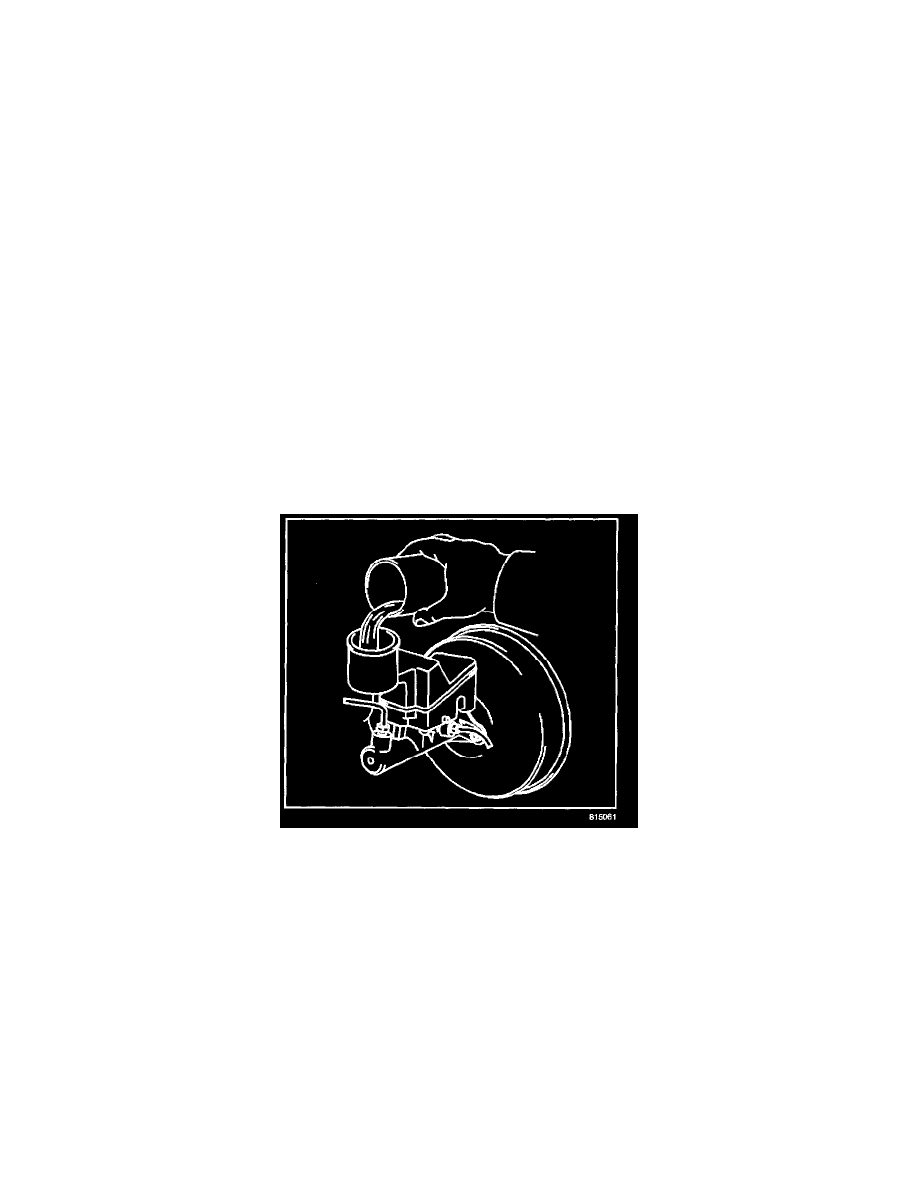Vibe L4-1.8L VIN L (2003)

4. Remove the reservoir diaphragm.
Caution: Refer to Brake Fluid Important Caution in Cautions and Notices.
Notice: Refer to Brake Fluid Effects on Paint and Electrical Components Notice in Cautions and Notices.
5. Remove the brake fluid with the syringe.
6. If the vehicle has a manual transmission, loosen the hose clamp (7) and remove the clutch hose (8) from the reservoir.
7. Remove the screw that retains the reservoir to the master cylinder (5).
8. Remove the reservoir and the grommets from the master cylinder (4,7).
Installation Procedure
Caution: Refer to Brake Fluid Caution in Cautions and Notices.
Notice: Refer to Filling the Master Cylinder Notice in Cautions and Notices.
1. Lubricate the grommets (4,7) with new brake fluid.
2. Install the grommets to the master cylinder.
3. Install the reservoir to the master cylinder.
4. Install the screw (5).
5. Install the reservoir diaphragm (2).
6. Fill the reservoir and install the cap. Refer to Master Cylinder Reservoir Filling. See: Master Cylinder Reservoir Filling
7. Inspect the master cylinder for fluid leakage.
8. Connect the brake fluid level switch connector.
Master Cylinder Reservoir Filling
Master Cylinder Reservoir Filling
Caution: Do not overfill the brake fluid reservoir. Over filling the brake fluid reservoir may cause the brake fluid to overflow onto the engine
exhaust components during brake system service. The brake fluid is flammable and may cause a fire and personal injury if the brake fluid
contacts the engine exhaust system components.
Caution: Refer to Brake Fluid Irritant Caution in Cautions and Notices.
Caution: Refer to Brake Fluid Caution in Cautions and Notices.
Notice: Refer to Brake Fluid Effects on Paint and Electrical Components Notice in Cautions and Notices.
Notice: Refer to Filling the Master Cylinder Notice in Cautions and Notices.
Important: The brake fluid level MUST be between the MAX mark and the MIN mark for the following reasons:
^
In order to provide adequate brake fluid reserve
^
In order to prevent air from entering the hydraulic brake system
^
In order to allow the brake fluid to expand due to the heat from the brakes and the engine
